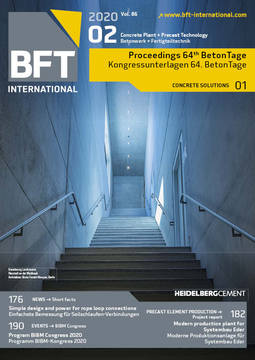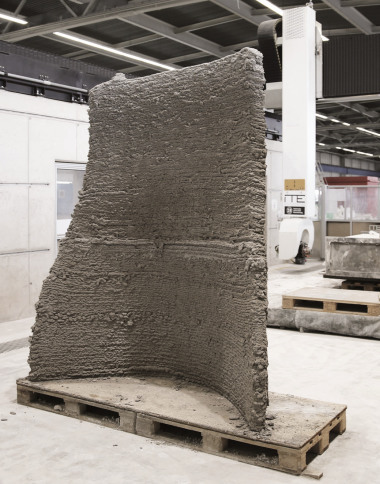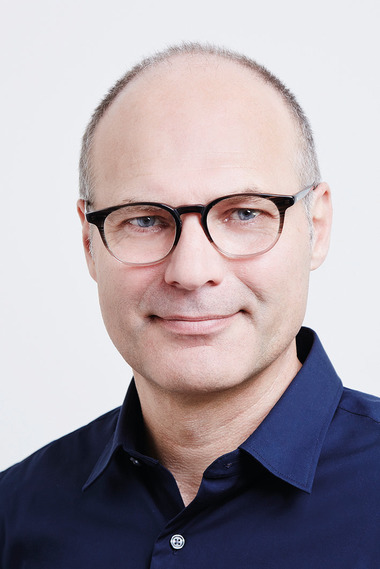Additive Manufacturing of 1:1 reinforced concrete elements with post-processed surfaces
Additive Manufacturing (3D printing) has the potential of becoming an automated production technology tailored to the individual requirements of the construction industry. The basic principle of Additive Manufactoring consists of application, where possible, of material only where it fulfills a function. In order to make full use of the potential of this technology, it is essential to fundamentally re-think structural design, construction and production. This means a completely new approach to planning and building and enables resource-efficient use of materials as well as new freedom of form.
At TU Braunschweig, the so-called Shotcrete 3D Printing Process (SC3DP) has been developed in a joint research project. SC3DP technology involves an innovative robotic concrete printing process that builds up construction components, layer by layer, under the controlled addition of compressed air. Since no formwork is used in 3D printing, the production process must depend on the loadbearing capacity of the fresh concrete layers applied. The loadbearing capacity of these layers, in the SC3DP process, is controlled by such processes as the addition of concrete admixtures. The lecture demonstrates the first 3D-printed reinforced-concrete elements such as walls, columns and floor slabs that were manufactured by the SC3DP process. In addition, the lecture presents current on-going research activities for post-production processing of the concrete surfaces.
3D printing has the potential of becoming a key technology for digitization of the construction industry. The newly established TRR 277 Collaborative Research Center of the German Research Association (DFG) – Additive Manufactoring in Construction – of the two Universities TU Braunschweig and TU Munich is aimed at fundamental investigation of the principles of 3D printing for application in the construction industry.
The lecture will conclude by presenting the directions of TRR 277.






